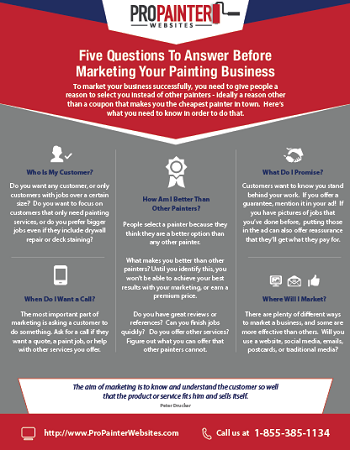Discover Just How Seasonal Variables Influence Industrial External Paint Success And Find The Best Times To Ensure Lasting Results For Your Job
Discover Just How Seasonal Variables Influence Industrial External Paint Success And Find The Best Times To Ensure Lasting Results For Your Job
Blog Article
Written By-McLamb Whalen
When you're preparing a commercial outside paint task, seasonal factors can make or damage your outcomes. You'll want to take into consideration just how temperature and humidity effect paint application and drying times. Picking the appropriate period can ensure your paint sticks appropriately and lasts much longer. Yet which periods are absolutely the most effective for this type of work? Let's check out the key elements that can impact your project's success.
The Influence of Temperature on Paint Application
When you're preparing a business exterior painting job, the temperature can significantly influence how well the paint sticks and dries.
Ideally, you intend to repaint when temperatures range in between 50 ° F and 85 ° F. If it's as well chilly, the paint might not cure effectively, bring about concerns like peeling off or cracking.
On the other hand, if it's as well hot, the paint can dry out as well rapidly, avoiding proper attachment and resulting in an uneven finish.
You should also think about the time of day; early morning or late afternoon offers cooler temperatures, which can be much more beneficial.
Constantly inspect the producer's recommendations for the details paint you're utilizing, as they commonly supply advice on the excellent temperature level array for optimum results.
Humidity and Its Result on Drying Times
Temperature level isn't the only ecological aspect that affects your business exterior painting job; moisture plays a substantial function also. High humidity levels can reduce drying out times dramatically, influencing the general quality of your paint job.
When the air is filled with moisture, the paint takes longer to treat, which can bring about issues like inadequate adhesion and a higher threat of mildew development. If you're painting on an especially humid day, be planned for prolonged delay times in between layers.
It's essential to check neighborhood climate condition and plan appropriately. Preferably, go for humidity levels in between 40% and 70% for ideal drying.
Keeping link web page consider mind guarantees your job stays on track and supplies an enduring coating.
Best Seasons for Commercial Outside Paint Projects
What's the best season for your commercial exterior paint jobs?
Spring and very early loss are commonly your best bets. Throughout straight lines painting , temperatures are light, and moisture levels are frequently reduced, creating ideal conditions for paint application and drying out.
Avoid summer's intense heat, which can create paint to dry as well promptly, resulting in poor adhesion and surface. In a similar way, winter months's cool temperatures can impede proper drying and curing, taking the chance of the durability of your paint job.
Aim for days with temperature levels in between 50 ° F and 85 ° F for optimal outcomes. Remember to inspect the neighborhood weather forecast for rain, as wet conditions can wreck your job.
Planning around these variables ensures your paint task runs efficiently and lasts longer.
Final thought
In conclusion, preparing your business exterior paint jobs around seasonal factors to consider can make a substantial difference in the result. By organizing work throughout the suitable temperatures and humidity degrees, you'll ensure better bond and drying out times. Bear in mind to watch on local weather prediction and select the correct time of year-- springtime and very early loss are your best options. Taking these steps will certainly help you achieve a long lasting and expert finish that lasts.
